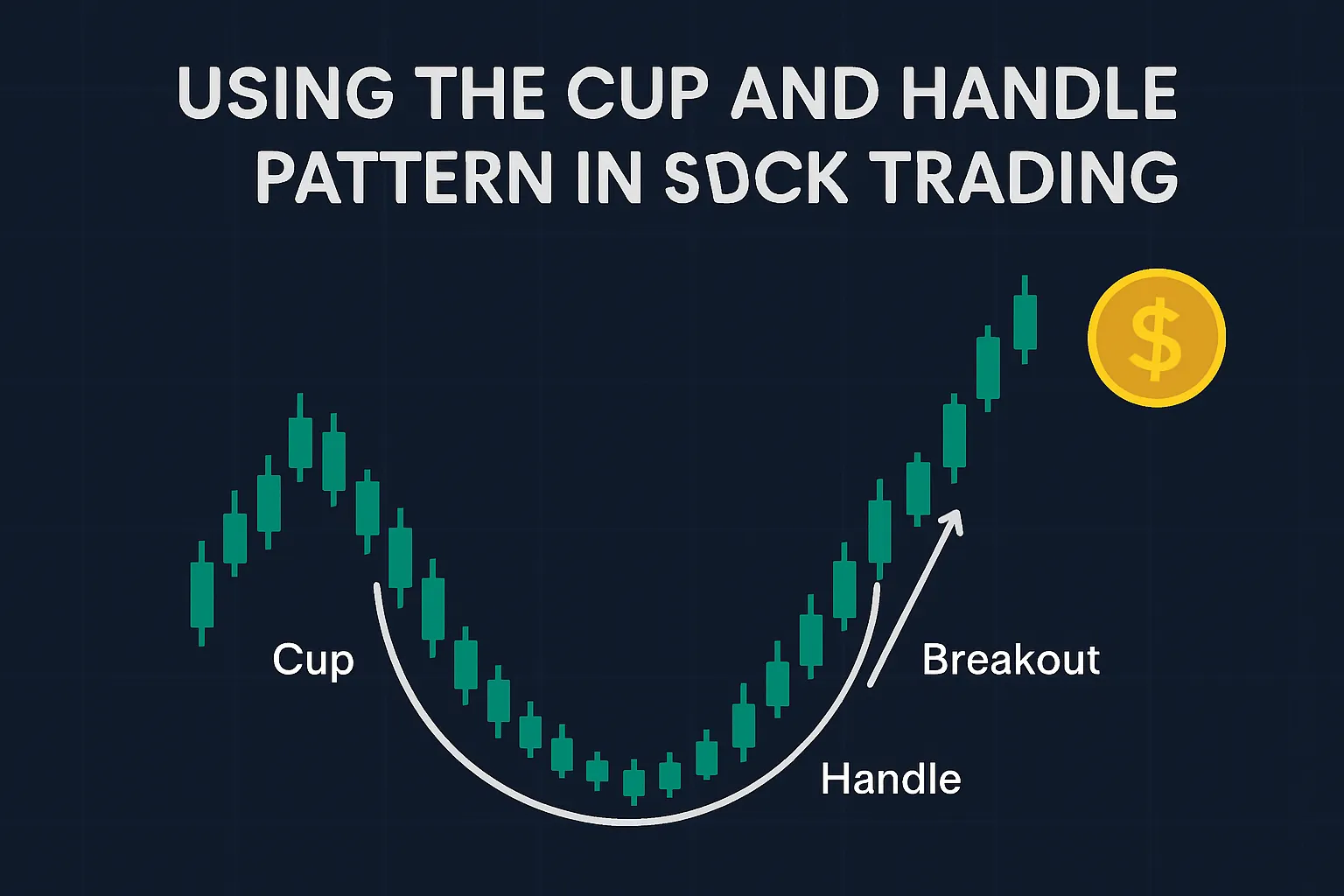
Introduction
The cup and handle in stock trading is a powerful tool for identifying bullish opportunities. This chart pattern helps traders spot stocks poised for significant price increases, making it a favorite among technical analysts. Whether you’re trading blue-chip stocks or growth equities, understanding how to apply the cup and handle pattern can boost your portfolio’s performance. This guide explores how to use the cup and handle pattern in stock trading, offering practical strategies and tips for success.
What is the Cup and Handle Pattern?
The cup and handle pattern is a bullish continuation chart pattern that forms after a price uptrend. It consists of:
- Cup: A U-shaped consolidation, resembling a bowl, lasting 1–6 months.
- Handle: A short, downward-sloping pullback, lasting 1–4 weeks.
In stock trading, the pattern signals a breakout when the price closes above the handle’s resistance with high volume, indicating a likely continuation of the uptrend. It’s particularly effective in growth stocks with strong fundamentals.
Why Use the Cup and Handle in Stock Trading?
The cup and handle pattern is ideal for stock trading because it:
- Signals Strong Breakouts: Identifies stocks ready to resume upward trends.
- Aligns with Fundamentals: Often forms in high-growth stocks with solid earnings, as popularized by William O’Neil’s CAN SLIM strategy.
- Offers Clear Entry Points: Provides precise breakout levels for timing trades.
This pattern is especially reliable in bullish markets, making it a go-to for stock traders.
How to Apply the Cup and Handle Pattern in Stock Trading
Follow these steps to trade the cup and handle pattern in stocks:
1. Identify the Pattern
- Look for a prior uptrend (e.g., 15–30% price rise) in a stock with strong fundamentals (e.g., high earnings growth).
- Confirm a U-shaped cup (20–30% depth, 1–6 months) and a handle (30–50% retracement, 1–4 weeks).
- Example: A stock rises from $50 to $65, dips to $55 (cup), returns to $65, and pulls back to $62 (handle).
2. Confirm with Volume and Fundamentals
- Ensure low volume in the handle and a volume spike on breakout above the handle’s resistance ($65 in the example).
- Check fundamentals using O’Neil’s CAN SLIM criteria: strong quarterly earnings, institutional buying, and market leadership.
- Use tools like TradingView to analyze volume and chart patterns.
3. Time Your Entry
- Enter after the price closes above the handle’s resistance with high volume (e.g., buy above $65).
- Alternatively, enter on a low-volume pullback to the breakout level for lower risk.
- Combine with indicators like RSI (below 70) or MACD (bullish crossover) for confirmation.
4. Set Price Targets and Stop-Loss
- Calculate the target by adding the cup’s depth ($10 in the example) to the breakout point ($65 + $10 = $75).
- Place a stop-loss below the handle’s low ($61) to limit losses.
- Aim for a risk-reward ratio of at least 2:1 (e.g., $10 gain vs. $4 risk).
5. Monitor Market Conditions
- Trade in a bullish market (e.g., rising S&P 500) to increase success rates.
- Avoid trading during earnings reports or major news, which can disrupt the pattern.
Common Mistakes in Stock Trading with the Cup and Handle
- Ignoring Fundamentals: Trading stocks without strong earnings or institutional support reduces reliability.
- Misidentifying the Pattern: Mistaking V-shaped dips for U-shaped cups leads to false signals.
- Neglecting Volume: Low-volume breakouts often fail in stock trading.
Tools and Resources
Enhance your stock trading with these resources:
- TradingView: Chart stocks and set breakout alerts. Visit TradingView.
- Investopedia: Learn about the cup and handle and CAN SLIM. Read on Investopedia.
- Investor’s Business Daily: Explore stock analysis and CAN SLIM strategies. Explore IBD.
Tips for Stock Traders
- Focus on Growth Stocks: Stocks with high earnings growth are ideal for cup and handle patterns.
- Practice on Historical Charts: Analyze past stock breakouts to refine your skills.
- Use Indicators: Combine RSI, MACD, or moving averages for stronger signals.
- Stay Disciplined: Wait for confirmed breakouts and align with market trends.
FAQ Section
Q: Why is the cup and handle effective in stock trading?
A: It identifies bullish breakouts in growth stocks, especially when paired with strong fundamentals.
Q: How do I confirm a cup and handle breakout in stocks?
A: Look for a high-volume close above the handle’s resistance and bullish indicators like RSI or MACD.
Q: Should I check fundamentals for cup and handle stock trades?
A: Yes, focus on stocks with strong earnings and institutional support, per CAN SLIM criteria.
Q: Can beginners use the cup and handle in stock trading?
A: Yes, with practice and tools like TradingView, beginners can master the pattern.
Q: What’s the best market condition for cup and handle stock trades?
A: A bullish market, like a rising S&P 500, enhances the pattern’s success rate.
Conclusion
Using the cup and handle in stock trading offers a clear path to profitable trades. By identifying the pattern, confirming with volume and fundamentals, timing entries, and setting targets, you can capitalize on bullish breakouts. Leverage tools like SAPRO and align with CAN SLIM principles for optimal results. For more stock trading insights, visit https://cupandhandlepattern.com/.





Leave a Reply